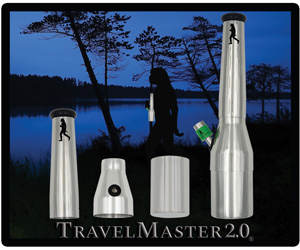Confusion

Feb, 2020 by Cannabiz Wholesaler
CONFUSION Confused by the difference between hemp and cannabis?
You’re not alone.
In fact, at a time when both industries are surging, surprisingly few Americans have a clear idea of how they differ. Indeed, government agencies, trade associations, news services, educational institutions and private companies are pulling out all stops in an attempt to educate the American public about their similarities and differences. And they are succeeding -- somewhat.
“Even after almost 50 years, the government still seems to have some confusion in distinguishing the two plants,” explained industry watchers at ministryofhemp.com. “Despite the recent legalization, federal policies surrounding hemp growing and sales of hemp products are often still up in the air, and banks continue to treat hemp businesses like criminals. In some rare cases, there are still arrests over hemp, such as truckers arrested while transporting completely legal hemp.”
There is, insisted counterpunch.org, “a lot of confusion about the difference between hemp, cannabis and marijuana. Hemp, cannabis or marijuana all are scientifically denoted by the Latin term, Cannabis Sativa; hemp, cannabis or marijuana are all the same plant species, Cannabis Sativa.”
Clearly, some delineation is in order.
Bringing Clarity
On its web site, Medical Marijuana, Inc., a Poway, CA-based holding company with subsidiaries that make and sell a range of hemp-based products, offered some clarity: “In practical use, ‘hemp’ is the term used to describe the food and fiber variety of the cannabis plant, and ‘marijuana’ is cannabis that’s grown to enhance the chemicals that make you feel intoxicated. However, the differences between hemp and marijuana go much deeper.”
In a feature headlined Marijuana vs. hemp: What’s the difference?, The Chicago Tribune noted that “Generally the difference between hemp and marijuana is in the concentration of THC (tetrahydrocannabinol), with hemp generally considered so low in concentration so as to be non-psychoactive. Hemp is still Cannabis Sativa, same as some of the most popular strains of marijuana.”
Cannabis contains up to 30% THC and is generally grown to maximize the growth of flowers and increase the concentration of THC, the Tribune continued. “Hemp is typically grown to maximize the overall size of the plant as quickly as possible, usually achieved by growing outdoors. A lot of marijuana, though not all, is grown indoors, so as to control many variables such as light cycles and soil nutrients. Hemp is still cannabis, bred to have a low THC, high-CBD concentration, and is a specialized variety of sativa.”
North Carolina State University pointed out that hemp and marijuana “are, taxonomically speaking, the same plant; they are different names for the same genus (Cannabis) and species,” wrote Matt Shipman. “Hemp and marijuana even look and smell the same,” added Tom Melton, Deputy Director of NC State Extension. “The difference is that hemp plants contain no more than 0.3 percent (by dry weight) of THC (tetrahydrocannabinol), the psychoactive substance found in marijuana. By comparison, marijuana typically contains 5% to 20% THC. You can’t get high on hemp.”
In other words, wrote Shipman, “cannabis plants with 0.3% or less of THC are hemp. Cannabis plants with more than 0.3% THC are marijuana.”
‘Distinctly Different’
The Motley Fool’s Todd Campbell explained still further. “Although marijuana and hemp can both come from the Cannabis Sativa family, they're distinctly different. Marijuana is bushier with broader leaves, while hemp is leaner with shinier leaves. It's differences in their chemical composition that really set them apart, though. More than 100 chemical cannabinoids are found in cannabis, but the amount of these cannabinoids differs dramatically between hemp and marijuana.”
The piece continued by pointing out that the low levels of THC in hemp “mean that, unlike marijuana, it has historically been used for industrial purposes. Hemp's rapid growth and strong fibers made it ideal for crafting durable rope, clothing, sail, and paper.”
During an NPR radio broadcast earlier this year, host Scott Simon explained that advocates “have long differentiated marijuana, the psychoactive cannabis flower that people smoke, from hemp, marijuana's non-psychoactive relative. But these days, more people are smoking hemp even though they're unlikely to get stoned.”
Vermont Public Radio's Emily Corwin, also on the broadcast, responded, “When Congress legalized hemp farming at the end of last year, a CNN reporter wrote this: “If you try to smoke hemp, you'll probably just end up with a headache."
While hemp differs from marijuana in its function, cultivation and application, ministryofhemp.com noted, those differences “didn’t stop our political leaders from getting confused and accidentally grouping all forms of cannabis as a Schedule I Drug and banning it in 1970 under the Controlled Substances Act.”
And it is politicians, more than other Americans, who need to hammer the differences between marijuana and hemp clearly into their heads. Each has now become a regular feature of the United States’ economy and, more importantly, its culture. If legislators are to draft effective policies for regulating marijuana and hemp, they need to make sure they know what each is, and is not.





















